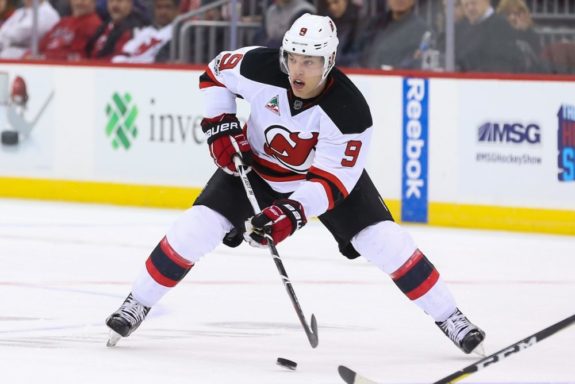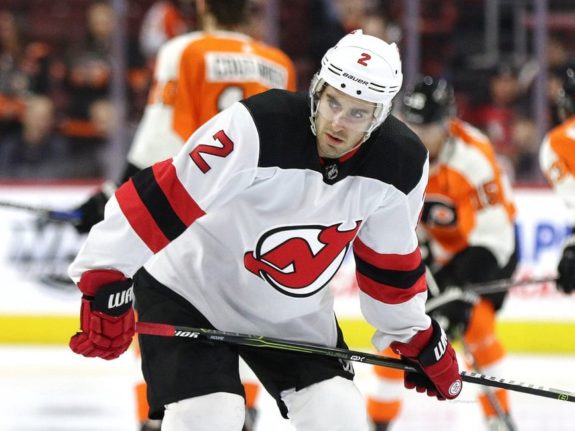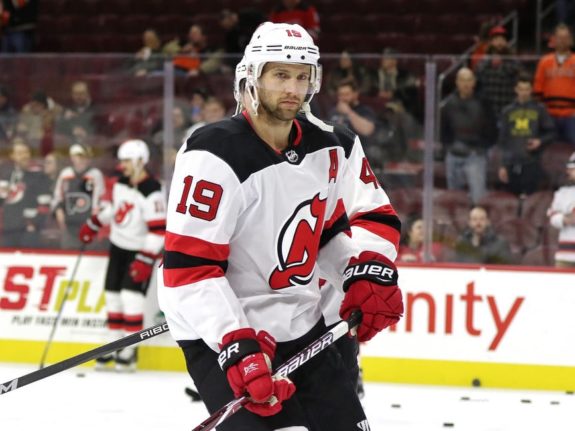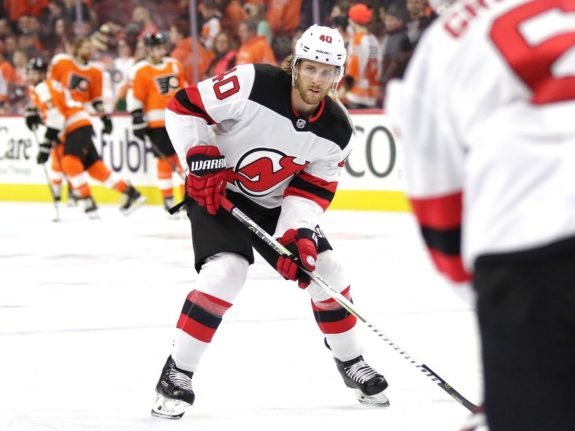Over the course of the season, the New Jersey Devils had a fair amount of success against their first-round playoff opponent, the Tampa Bay Lightning. They went 3-0 against them, even though all of the games were decided in close fashion. As the postseason is set to begin, here are some key factors that will help them continue their success against the Lightning.
Can Devils Score Enough to Keep Up?
The Devils shouldn’t be looking to get into a shootout, but they’ll need to score some goals against the best offense in the league. Their offense is pretty good in their own right, averaging 2.52 goals for per 60 minutes (GF/60) at five-on-five, which is eleventh best in the league. The Lightning’s scoring, though, was unrivaled in the 2017-18 NHL season. They averaged 3.08 GF/60, which is comfortably ahead of second place Toronto’s rate of 2.83.
A big reason for that production comes from a deep group of forwards that helped them finish first in the East. They finished the season with six forwards totaling over 50 points, led by Nikita Kucherov, who finished the season with 100 points. The Devils, on the other hand, finished with just two players over 50 points — Taylor Hall and Nico Hischier.

They may not have the same high-end scoring talent as the Lightning, but the Devils did have 10 different players finish with double-digit goal totals. The key for them will be getting offense outside the line of Hall, Hischier, and Palmieri. Over the final week of the season, it’s possible John Hynes may have found a second line to help that cause.
Miles Wood, Pavel Zacha, and Patrick Maroon only played as a trio in the last two games of the season, but they had a significant impact together. Over those two games, Zacha and Wood each finished with three points while Maroon had five. The line possesses a combination of size and skill and is hot at the right time. If they can carry it over into the postseason, it should help the Devils get enough offense to compete.
Can Moore & Mueller Be Relied On?
In addition to scoring some goals, the Devils will need to play some solid defense. Andy Greene and Sami Vatanen will be in charge of stopping the Stamkos line. Unfortunately, they can’t be asked to do everything, so the Devils will need their other defense pairs to step up.
Of those pairs, John Moore and Mirco Mueller are of the most concern. They were the Devils second pair over the final few games of the seasons, and their numbers at five-on-five aren’t overly encouraging. It’s a small sample size of just 86 minutes together this season, but the Devils had a 46.9% Corsi For (CF%) and were out-chanced 40-44 with them on the ice.

Against a team like Tampa Bay, those two can’t afford to be outshot and out-chanced consistently, or it’ll be a problem. Damon Severson could draw back into the lineup after being a healthy scratch in three of the final four games of the season. That said, his results with Moore are not much better — the Devils have a 48.8 CF% and have been out-chanced 353-393 with them on the ice.
Moore and Severson’s numbers come from a much bigger sample size (757 minutes together). However, even with their numbers, the Devils would probably be best off using those two against the Lightning. Severson has better underlying numbers than Mueller and is a better puck-mover than him. That’ll be key for the Devils not getting hemmed in their own end too often.
Related: Devils and Lightning: Facts and Stats
Travis Zajac Ready to Lock It Down
One of the few remaining Devils from the team’s last postseason run is Travis Zajac, and there’s no doubt he’s excited to be back in the playoffs. Six years later, he may not have the same role as he did then but he’ll still play an important part against the Lightning. John Hynes will be looking for him and his linemates, Blake Coleman and Stefan Noesen, to continue being the shutdown line they were over the final weeks of the season.
I touched upon this in one of my recent articles, so I won’t go too deep into the stats, since not much has changed, but the gist of it is that they don’t give up a whole lot. Over the final three weeks of the season, the Devils out-chanced their opponents 27-20 and didn’t give up a goal at five-on-five with these three on the ice.

If there’s any way the Devils can at least contain the Lightning’s offense, it’ll start with this line, even more so than any defense pair they have. They were able to limit Stamkos’ line to no points in a 2-1 victory just two weeks ago. Holding them off the scoresheet altogether over a seven-game series is almost impossible, but if Zajac can keep them contained the Devils chances of an upset improve that much more.
Devil’s Special Teams Will Be Critical
Both teams come into this series with top-10 power plays. The Devils are ranked tenth while the Lightning are ranked third. The Devils power play had been particularly good down the stretch, converting on 10 of their last 38 chances. Will Butcher has been a big reason for that, as he’s moved back to the team’s first unit and has given them a jolt that they were missing.
Where the biggest difference on special teams may come in this series is on the penalty kill. At 81.8%, the Devils PK ranks seventh in the league, while the Lightning are 28th with a 76% success rate. Each team’s stats are pretty reflective of why one team is in the top-10 while the other is in the bottom five.

For example, shot suppression has been an issue for the Lightning. For the season, they averaged 106.2 shot attempts against per 60 minutes while down a man, which is 10th worst in the league. If we look at the Devils’ numbers, it’s almost the polar opposite. They averaged 94.9 shot attempts against per 60 minutes, which is the third-best rate in the NHL. Tampa has also given up 64 goals, which is second worst in the NHL. Meanwhile, the Devils have given up 47, which is in a tie for 12th best in the league.
The better job of killing penalties could prove crucial. The Devils have a good enough power play to give a weak Lightning penalty kill some problems. If their penalty kill can hold up against the Lightning’s power play, it could give them a leg up on special teams.
Keith Kinkaid Needs to Stay Hot
Finally, the Devils will need Kinkaid to continue playing at the level he has over the last two months of the season. In his last 11 outings he was 9-1-1 with a .930 save percentage and was one of the team’s best players down the stretch. He faced the Lightning once this season, making 35 saves in a 2-1 win just over two weeks ago. Considering what Tampa is capable of on offense, the Devils will need Kinkaid to give them that or better if they want to be playing past the first round.
* * *
Advanced stats from Natural Stat Trick